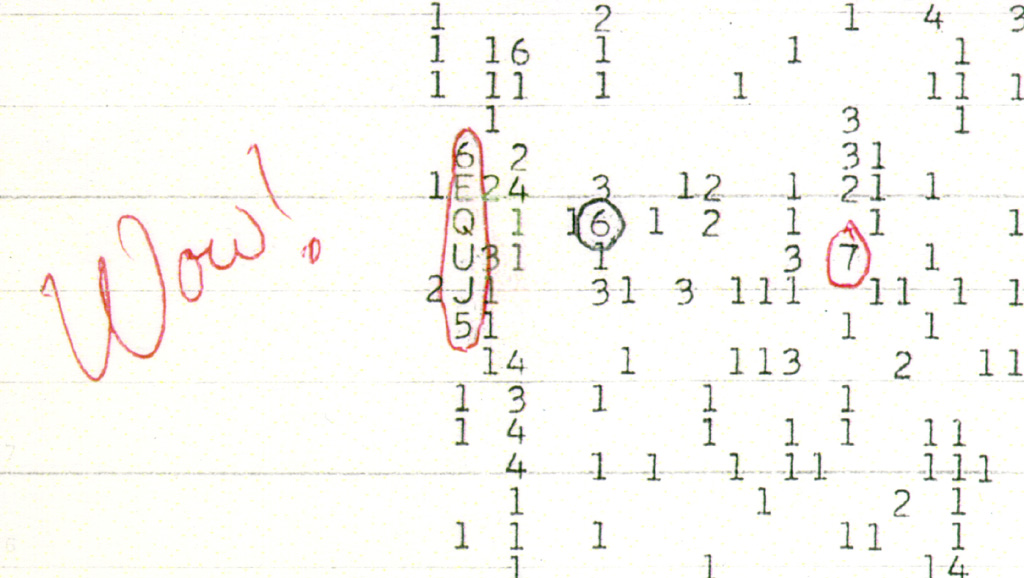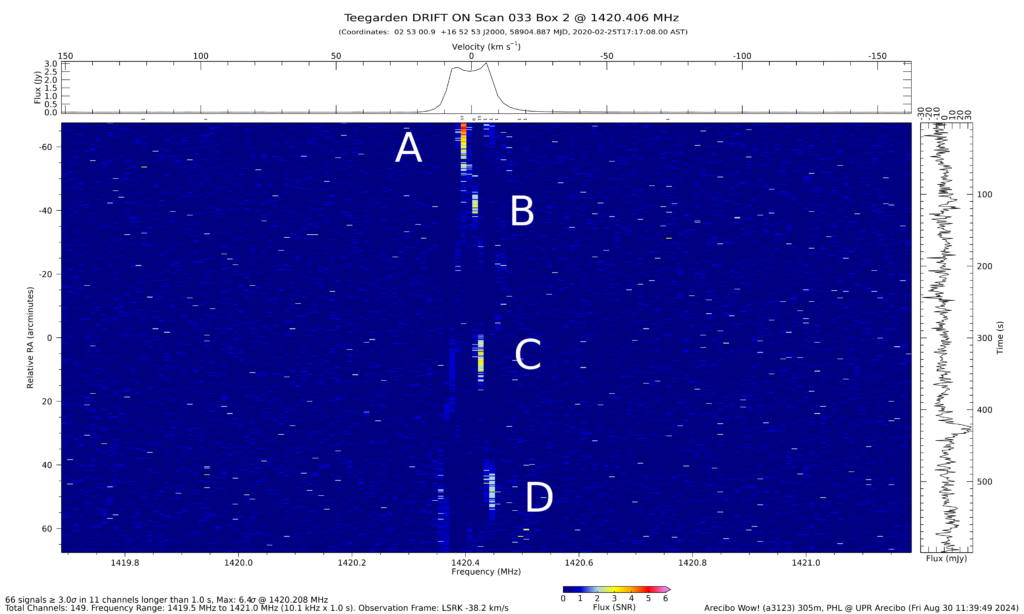Researchers from the Planetary Habitability Laboratory at the University of Puerto Rico at Arecibo have proposed a new explanation for one of the most mysterious radio signals in history. It’s about the famous Wow signal!

The Wow! signal was detected in 1977 by the Big Ear radio telescope. Amazed at how closely the characteristics of the received signal matched the expected characteristics of the alien transmission, astronomer Jerry Eyman circled the corresponding group of symbols on the printout and inscribed Wow! This signature gave the signal its name.
The origin of the Wow! signal is still a mystery. Attempts to re-register it have failed. Over the following years, scientists have offered many explanations for the phenomenon, but none of them has ever become dominant in the scientific community.
Now the list of hypotheses for the origin of the Wow signal has been updated with a new version from the participants of the “Arecibo Wow!” project. Its goal was to search for similar signals using archival data from the former Arecibo Observatory. From 2017 to 2020, the team of astronomers observed various celestial objects at frequencies ranging from 1 to 10 GHz using the observatory’s legendary 305-meter telescope. In 2023, the project continued with observations at 8 GHz with the 12-meter telescope, focusing on red dwarfs with potentially habitable exoplanets.
According to project leader Abel Mendez, recent observations made between February and May 2020 have revealed similar narrow-band signals near the hydrogen line, although less intense than the original Wow! signal.

The study authors suggest that the Wow! signal could be caused by a unique astrophysical event: a sudden increase in the brightness of a cold hydrogen cloud due to stimulated emission from a transient source of strong radiation, such as a magnetar flare or a source of soft repeating gamma-ray bursts. Such rare events can make hydrogen clouds shine much brighter for a moment.
The new hypothesis is good in explaining the unique characteristics of the Wow! signal and its fleeting nature. According to the researchers, the Wow! signal was probably the first recorded case of hydrogen line maser emission. This version is also interesting because it reveals a new source of false positives for projects that aim to search for technosignatures of extraterrestrial civilizations.
According to phl.upr.edu


